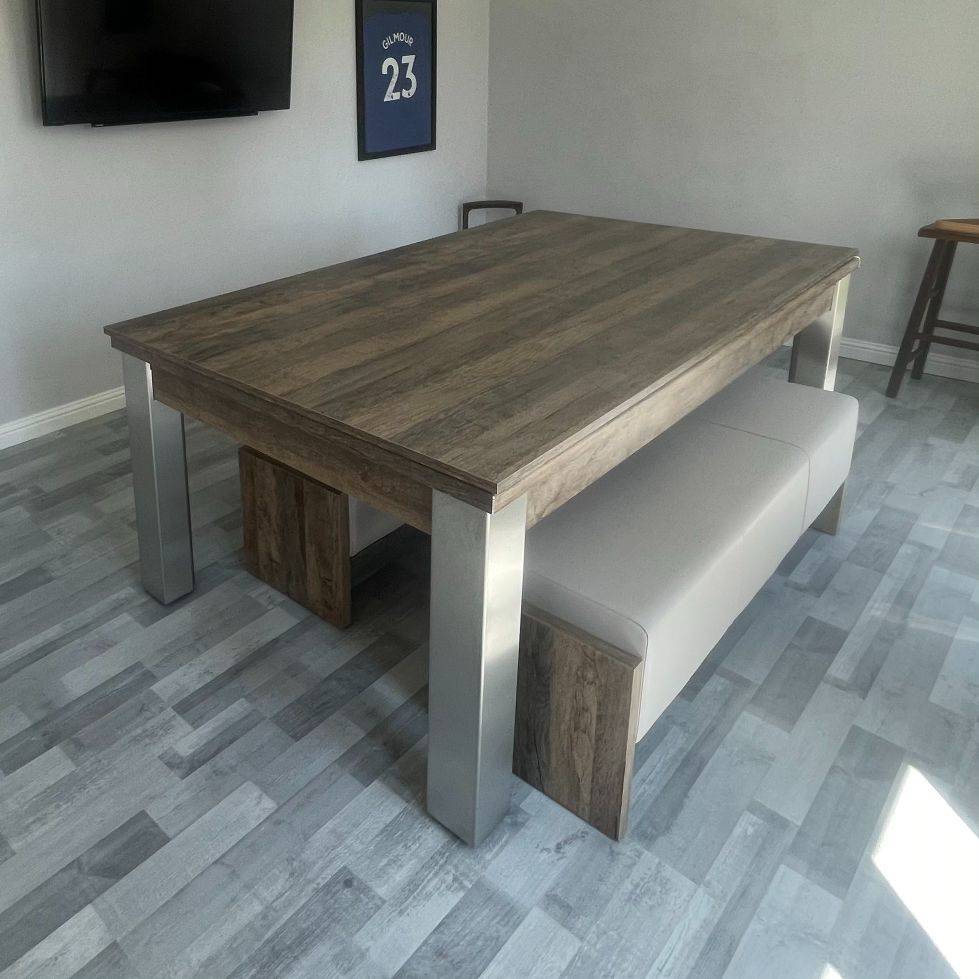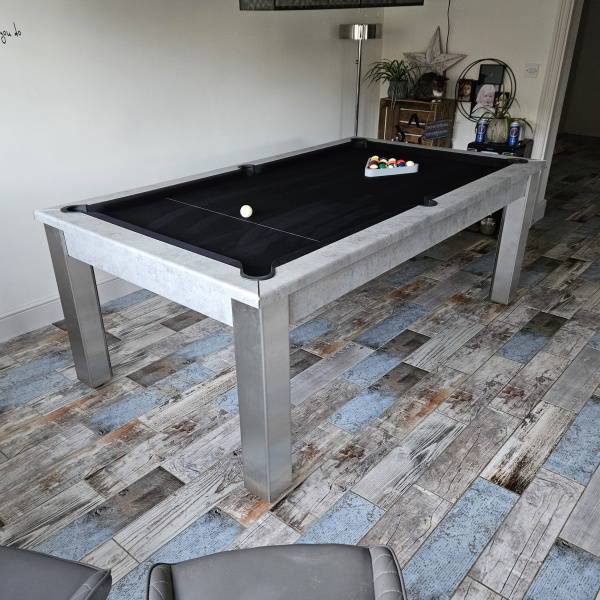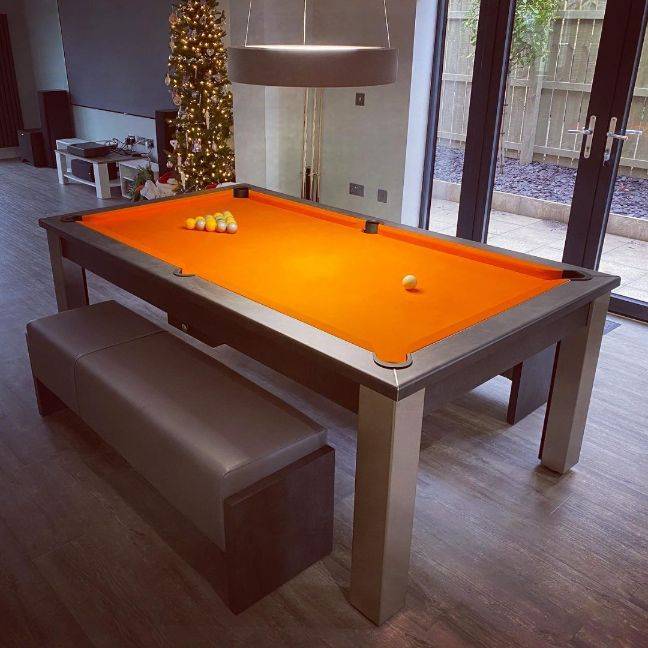Felt Colours and Their Impact on Gameplay and Room Aesthetics
The role of colour in design is indisputable. From influencing our moods to shaping our perceptions, colour is a powerful element that designers carefully deploy. Within the context of games rooms and, more specifically, on billiards and snooker tables, the choice of felt colour can greatly influence both the aesthetics of the room and the actual gameplay. In this article, we shall delve into the profound impact of felt colours and how they affect our experiences.

The Tradition of Green Felt
If one were to close their eyes and imagine a snooker table, the vast majority would conjure an image of a table draped in green felt. This ubiquitous association with green has its roots in history. Originally, billiards was an outdoor game, and it's believed that the green cloth was intended to mimic the appearance of grass, bridging the transition of the game from the great outdoors to the cosy indoors.
The green colour, aside from its historical significance, offers a contrast against the coloured and white balls, making it easier for players to see and strategise. It’s no surprise, then, that green has been a favourite for centuries.
Felt Colours and Gameplay
Although green is the most common, various other colours like blue, red, and even black are available in the market. Each colour can influence gameplay in unique ways.
Darker shades, such as navy blue or black, can reduce the visibility of shadows on the table, ensuring that the lighting doesn't cast deceptive shadows that could influence shots. On the flip side, lighter felts can make chalk marks more evident, which might detract from the game’s aesthetics, but give a tangible history of gameplay. Reds and burgundies, while stunning and rich, can sometimes make it a tad challenging to differentiate between similarly hued balls, potentially impacting gameplay.
Room Aesthetics and Colour Theory
While gameplay is a vital consideration, for many, the aesthetics of the game room are equally important. After all, these rooms often serve as a focal point for social gatherings, reflecting the owner’s style and personality.
Using colour theory, one can harmonise or contrast the felt colour with the room’s overall design. Green, being a cool and calming colour, tends to exude an atmosphere of relaxation and focus – apt for a game that demands concentration. For rooms with a traditional, wood-heavy decor, a classic green can seamlessly blend in.
However, contemporary design trends might lean towards unconventional colours. A black felt table can offer a sleek, modern look, particularly fitting in rooms with a minimalist or industrial design. Reds and burgundies ooze opulence and luxury, suitable for more grandiose game rooms.

The Psychological Impact
Colours don't just influence room aesthetics; they can also have psychological impacts. Blue, for instance, is known to have a calming effect and might help players maintain a cool demeanour during tense moments in the game. Reds, on the other hand, are energetic and can be stimulating. They might serve to invigorate players, but there's also the potential of it being slightly distracting due to its vibrancy.
Practical Considerations
Beyond aesthetics and gameplay, there are practical considerations when choosing a felt colour. Lighter felts, while potentially stunning, might show wear, tear, and stains more readily than their darker counterparts. For rooms that expect a high footfall or tables that will see extensive use, opting for a darker hue might be beneficial in the long run.
The Evolution of Trends
Historically, billiard tables were reserved for the elite, often found in the grand halls of aristocrats. Green, as mentioned earlier, was the primary choice, but it was more than just an aesthetic choice; it was a reflection of societal norms and values. The colour green, in many cultures, symbolises wealth, stability, and ambition.
However, as the game became more democratic and accessible to the masses, the need to adapt to various environments and preferences led to an expansion in colour choices. Nowadays, customisation is key, and people desire their game rooms to be an extension of their personal style.
Regional and Cultural Differences
In different parts of the world, colours hold varied symbolic meanings. For example, in Eastern cultures, red is a highly auspicious colour, symbolising luck, joy, and happiness. Having a red felt table in such cultures might not just be an aesthetic choice but a reflection of cultural values and beliefs.
Conversely, in Western cultures, blue is often associated with depth, stability, trust, and loyalty. This might explain a growing preference for blue felts among players seeking a tranquil environment.
Lighting and Felt Colours
The choice of felt colour can also have practical implications when considering room lighting. Darker felts can absorb more light, potentially necessitating stronger room lighting to ensure clear visibility. On the other hand, lighter felts can sometimes reflect too much light, leading to unwanted glares. The type of lighting fixtures, be they overhead pendant lights or wall sconces, combined with the felt colour, can greatly influence a player's experience.
Emotional Resonance
Beyond the game, billiard tables often serve as conversation starters. A uniquely coloured table can evoke certain emotions or memories. A deep wine-coloured table might remind someone of their favourite cabernet, while a sandy beige might bring memories of a cherished beach holiday. These subtle emotional resonances can deeply influence the overall experience of the room.
The Future of Felt Colours
As technology advances, we might see even more innovative approaches to felt colours. Imagine tables with colour-changing capabilities, adapting to the mood or even the time of day. Or perhaps felts infused with patterns, images, or designs, turning the table into a piece of interactive art.

In Conclusion
Choosing the right felt colour for your billiards or snooker table is a delightful blend of considering gameplay mechanics, room aesthetics, psychological effects, and practicality. While tradition has set a precedent with the calming greens, the world of design invites us to challenge the norm and pick a hue that resonates with our style and purpose. After all, whether it's a friendly match or a competitive game, the environment in which we play holds the power to shape our experiences profoundly.
Are you looking for a Pool Table? check out our pool tables range Pool Tables





